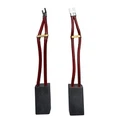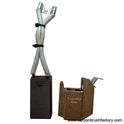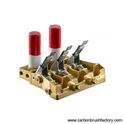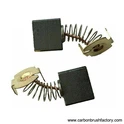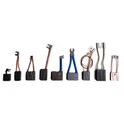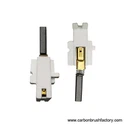A carbon brush is a device in an electric motor, generator, or other rotating machinery that transmits electrical energy to a coil through a commutator. When the carbon brush has the following conditions, it needs to be replaced in time:
1. Severe wear, i.e. less than 1/ of the original length/
3);
2. Severe damage;
3. The contact surface between the carbon brush and the slip ring is less than 70%.
If the carbon brush corresponding to the motor is not replaced correctly, it may lead to a large amount of brush runout on the slip ring when the rotor rotates, a spark caused by the brush spring, and an inappropriate spring pressure finger pressure, which will lead to the discharge of the skipping brush.
Signs of good brush performance include: long service life, no wear of commutators or collector rings; It has good commutation and current collection performance, so that the spark is suppressed within the allowable range and the energy loss is small; It is not overheated, the noise is low, the assembly is reliable, and it is not damaged.
On the same motor, in principle, the same type of brush should be used. However, for large and medium-sized motors with particularly difficult individual commutation, twin brushes can be used, and brushes with good lubrication performance are used on the sliding in side, and brushes with strong spark suppression ability are used on the sliding out side, so as to improve the operation of the brushes.
To what extent do carbon brushes wear out and need to be replaced
Therefore, when the carbon brush is worn to a certain extent, it needs to be replaced in time to ensure the normal operation of the motor or generator.

